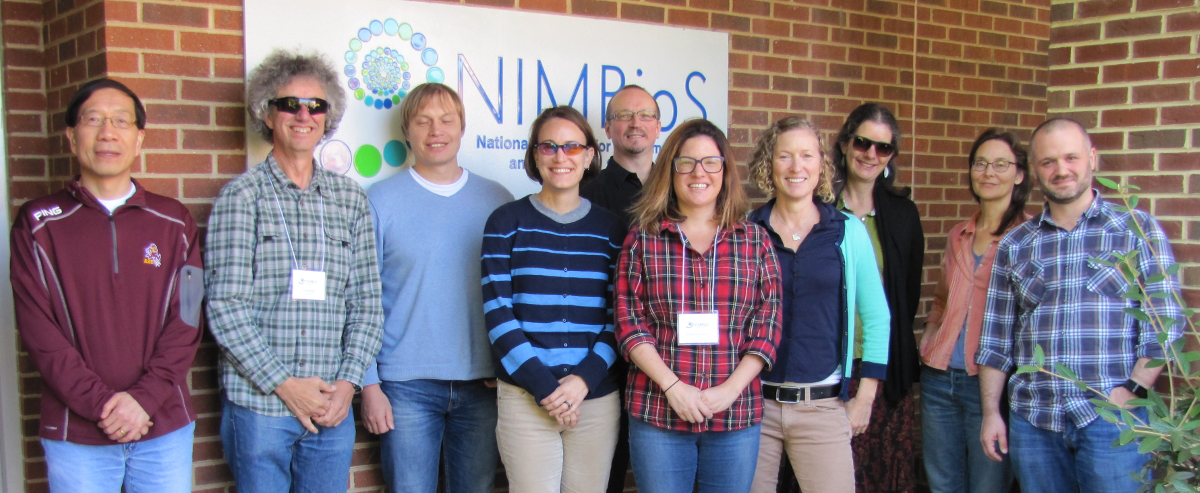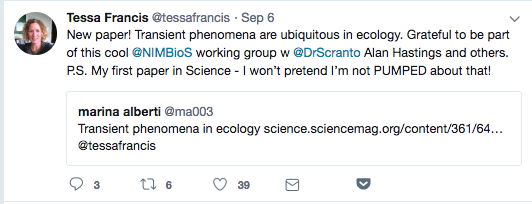
Long Transients Working Group Meeting 2 from October 2017: Ying-Cheng Lai, Alan Hastings, Andrew Morozov, Karen Abbott, Sergei Petrovskii, Katherine Scranton, Tessa Francis, Mary Lou Zeeman, Kim Cuddington, Gabriel Gellner
A review paper published this week in Science by the NIMBioS Working Group on Long Transients and Ecological Forecasting is generating buzz on social media.

The paper proposes a classification system for ecological dynamics that persist over ecologically relevant time scales—dozens of generations or longer. These “long transient dynamics” are applicable to many questions in ecology, such as how to explain species distributions or population changes over broad timescales. Previous research has treated transient phenomena separately, which the authors write, makes instances of transient dynamics appear “novel and idiosyncratic.” In this review, the authors turn to dynamical systems theory to develop a classification scheme that categorizes the mechanisms underlying transients. The study also links empirical observations to simple prototypical models. The systematic framework described in the review could be useful for ecosystem management.
The Working Group has met twice at NIMBioS since 2017 and is scheduled to meet for a third time later this month. It is co-organized by Alan Hastings (Environmental Science and Policy, Univ. of California, Davis); Kim Cuddington (Biology, Univ. of Waterloo, Canada); Andrew Morozov (Mathematics, Univ. of Leicester, UK); and Sergei Petrovskii (Mathematics, Univ. of Leicester, UK).
Citation: Hastings A et al. 07 Sep 2018. Transient phenomena in ecology. Science. Science 361:6406, DOI: 10.1126/science.aat6412
